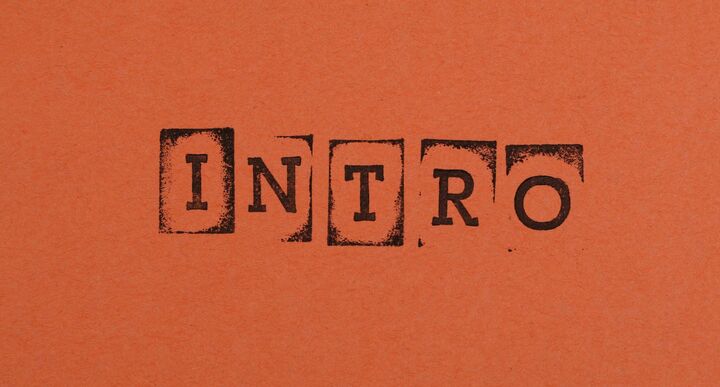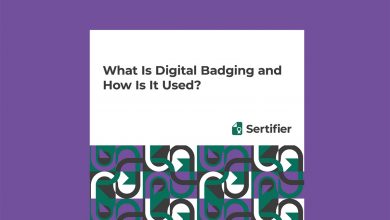What is Digital Badging
Table of Contents
An Introduction to Digital Badging

When people ask us what is digital badging, we try to explain it as simply as we can, and in the most simple terms, digital badging is a mechanism for digitally acknowledging and confirming an individual’s abilities, achievements, or accomplishments. Using online badges represents and showcases one’s expertise, talents, or credentials. They contain metadata and information about the precise achievement they represent.
Explaining Digital Badging:
Digital badging simply recognizes and certifies an individual’s achievements or talents in various disciplines, including education, professional development, and online courses. These Digital badges are often shown as digital symbols or graphics, including pertinent achievement information.
What is Digital Badging?
Digital badging is a new approach to display and validate your achievements. It entails issuing online badges similar to virtual diplomas or awards to persons who have exhibited specific talents, finished courses, or reached milestones.
These badges provide metadata such as the issuer’s information, the criterion for getting the badge, and the date it was issued. They may be published on social media, personal websites, or professional profiles, making it simple for individuals to promote their talents and achievements to potential employers, coworkers, or the larger online community. As they are pretty easy to understand, you don’t need to ask what is digital badging anymore; you will know precisely what is digital badging after you read our article.
Online badges are becoming increasingly popular in education and professional development because they provide a flexible and portable approach to demonstrating one’s knowledge and track record. As the digital badging ecosystem evolves, it will become a vital tool for individuals to distinguish themselves in a competitive job market and for businesses to analyze and acknowledge the abilities of their members or workers.
The History and Evolution of Digital Badging

The origins of digital badging may be traced back to conventional physical badges and certificates, which have been used for generations to recognize achievements, abilities, and qualifications. The demand for a more varied and shared depiction of one’s accomplishments led to the creation of digital badging systems as society evolved toward the digital era.
Historical context:
Traditional badges and certificates have been used to reward achievements and talents in school, the military, and numerous organizations for ages. These tangible representations were frequently seen on uniforms, walls, and portfolios.
The Rise of Online Badges:
As digital technology grew increasingly ubiquitous in the early twenty-first century, the notion of online badges began to gain traction. The creation of digital badging systems was prompted by the emergence of the internet and the demand for a more portable and shared method of validating skills and knowledge.
What is Digital Badging in the Modern Context?
Online badges are a modern reaction to the requirement for a more flexible and verified way of reflecting achievements and skills. They are digital symbols or graphics with metadata identifying the achievement, issuer, criterion, and date granted. The capacity to readily share them online is the primary differentiation.
A Brief History of Digital Badging:
Open Badges Initiative: In 2011, Mozilla unveiled the Open Badges Initiative, a significant advancement in creating online credentials. To make it simpler for people to gather and share their online credentials across many platforms and organizations, it attempted to standardize the format for online badges.
Education and Professional Development: Education and professional development saw tremendous growth for online badges. Several educational institutions and organizations have started employing online badges to augment traditional diplomas and certifications and recognize specific talents or competencies.
Online learning platforms: These platforms have begun awarding online badges to students who successfully finish courses or show that they have mastered particular abilities. Examples include Coursera and edX. These certificates allowed students to demonstrate their expertise to prospective employers or academic institutions.
Abilities Validation and Hiring: Employers have noticed online badges as a more thorough and verified method of evaluating job candidates’ skills and credentials. Even the employment procedure for certain businesses has begun to embrace online badges.
Current Situation: Digital badging has developed into a flexible system for identifying and displaying abilities, accomplishments, and credentials. They are now an essential component of online learning, professional development, and recruiting procedures, making it more straightforward for people to stand out and for businesses to assess talents accurately.
In an increasingly digital environment, there is a rising demand for a more effective and shared way to recognize accomplishments and talents. This need is strongly related to the history and development of digital badging.
The Benefits of Digital Badging for Individuals and Organizations

Individual Advantages of Digital Badging:
- Skill Recognition: Online badges enable users to display and verify their talents and achievements graphically.
- Motivation: Individuals are motivated to create and attain educational goals when they earn badges.
- Microcredentials: They provide essential microcredentials that improve resumes and online profiles.
Organizational Advantages of Digital Badging:
- Credentialing: Organizations can offer badges to authenticate specific skills and qualifications, allowing others to better grasp an individual’s capabilities.
- Engagement: Badges can increase student engagement and involvement in educational programs.
- Customization: Organizations can build personalized badges corresponding to their learning objectives.
- Assessment: Badges examine and evaluate participants’ progress in training or educational programs.
How Online Badges Are Used in Education

Online badges acknowledge and certify a person’s abilities, achievements, or competencies in various educational contexts. They are a digital depiction of accomplishments and may be achieved in multiple learning venues, including traditional schooling, online courses, seminars, and more. Here’s how online badges are utilized in education:
- Skill Recognition: Online badges give a visible and verified approach to highlighting specific abilities and accomplishments. For example, a student who excels in coding during an online coding course can obtain the “Coding Master” badge.
- Motivation and Engagement: Badges can inspire students to attain their educational objectives. Students are generally more motivated to perform assignments when they know they will receive a badge as a reward.
- Microcredentials: Online badges can demonstrate a person’s knowledge in a certain field. These microcredentials are helpful for students and professionals since they may be used to boost resumes and LinkedIn profiles.
- Portable and shareable: Online badges are readily shared on social media, personal websites, and online profiles. This makes it easier for students to demonstrate their accomplishments to prospective employers, coworkers, or classmates.
- Standardization: Many online badges are tied to industry or educational standards, making it easy for employers and institutions to grasp the skills and knowledge of a specific badge.
- Lifelong Learning: The notion of lifelong learning is supported by online badges. Individuals may earn badges throughout their lives, enhancing their abilities and knowledge.
- Customization: Educators and institutions may create and distribute personalized badges to meet their unique demands and learning objectives. This enables a more customized approach to schooling.
- Gamification: Using badges may add a gamification aspect to the learning process, making education more exciting and rewarding.
- Formal and Informal Learning: Online badges aren’t just for school. They can also be given out for non-formal learning activities like finishing a coding project, attending a workshop, or participating in a community service program.
- Assessment and Evaluation: Badges can be used to assess and evaluate students. They give a straightforward method for measuring and documenting a learner’s progress and accomplishments.
The Role of Digital Badging in Professional Development

In professional development, digital badging has become a helpful tool that gives people and organizations a quick and flexible way to recognize and highlight their abilities. Online badges have a variety of uses in the context of professional development. First, they give professionals a concrete means to record their efforts at upskilling and continual learning.
Online badges can be obtained through quick courses, seminars, webinars, or other learning opportunities, unlike traditional degrees or certificates, which may require a significant investment of time and money. This makes them especially suited for professionals looking to further their careers or keep current in their areas.
Online badges can help validate talents in a labor market that is continually changing. Employers seek workers with specialized skills and knowledge as the workplace grows more dynamic. Professionals may improve their marketability and career chances by displaying their specific talents to prospective employers via online badges. Organizations may then utilize online badges to identify applicants with the needed abilities and credentials, expediting the hiring procedure.
Digital badging for professional growth also encourages employees to study continuously and to be motivated. People are encouraged to participate in continuing learning opportunities by earning badges, which may be a source of incentive and recognition. This is especially helpful for organizations and businesses looking to develop a flexible workforce responsive to shifting market trends.
In conclusion, digital badging in professional development gives organizations a vital tool for talent development, recruitment, and maintaining a skilled workforce in a rapidly changing professional landscape. It also serves as a flexible and effective way for individuals to upskill, validate their competencies, and stay competitive in the job market.
Digital Badging in the Workplace: Employee Recognition and Skill Validation

In the workplace, digital badging is crucial for acknowledging employee accomplishments and approving their competencies.
Here is an example of how online badges are used in a business environment:
- Recognition of Staff Achievements: Online badges provide a visible and verifiable method of recognizing and rewarding staff accomplishments. Online badges offer a concrete and shared depiction of these successes, whether they relate to finishing training programs, learning new skills, or exhibiting remarkable performance. Recognizing and celebrating individual and team accomplishments raises employee morale and helps create a great workplace culture.
- Assessment and Validation of capabilities: It is essential for businesses to effectively assess and validate the capabilities of their staff in today’s fast-paced, constantly changing corporate environment. This procedure is more efficient and transparent, thanks to online badges. Employees who exhibit competence in particular areas can receive badges from their employers, enabling a precise and thorough assessment of a person’s talents. This may help with project selection, performance reviews, and succession planning, ensuring that workers are suitable for their positions.
- Professional Development: Online badges promote ongoing education and growth inside the workplace. Employers may use badges to track skill development projects and encourage employees to upgrade their skills and adjust to shifting job demands. Employees who acquire badges may highlight their growing skill sets, which is advantageous for individuals looking for professional growth chances inside the company.
- Onboarding and Integration: The onboarding process of new workers may be streamlined with online badges. They can exhibit their credentials and experience by displaying online badges from prior positions. This helps new recruits settle in more quickly and guarantees they have the appropriate abilities from day one.
- Compliance and Certification: Online badges are a trustworthy approach to confirm compliance and certification criteria in regulated areas like healthcare or finance. Employers might issue badges to verify that employees have fulfilled certain industry norms and requirements and comply with legal and ethical requirements.
Online badges provide a transparent and effective tool to assess abilities while recognizing and rewarding employee accomplishments in the workplace. This encourages continual professional development and aids businesses in adapting to shifting demands, ultimately resulting in a more informed and adaptable workforce.
Conclusion
In conclusion, digital badging, or online badges, is a potent tool with many uses. Online badges are a contemporary method of recognizing and certifying accomplishments and abilities that benefit people and businesses.
Online badges are used in education to reward and inspire students and provide a portable means of showcasing abilities and accomplishments. They support lifelong learning and may be tailored to specific learning goals. Online badges are being utilized more often in formal and informal education, improving the evaluation and assessment procedures.
Online badges have revolutionized how people track their upskilling and continual learning efforts in professional development. They provide a rapid and adaptable method of validating abilities, increasing the marketability of experts in a constantly shifting labor market. Rapidly finding competent individuals and encouraging staff to take advantage of continual learning opportunities are advantageous to organizations.
Online badges are an effective tool for rewarding employee accomplishments, evaluating and verifying abilities, fostering professional growth, speeding up onboarding, and assuring adherence to industry standards.
The importance of the digital badging ecosystem is growing as it develops in a world where it is necessary to acknowledge and validate accomplishments and abilities. For people and organizations across a range of industries, online badges are a significant resource because to their flexibility, mobility, and verifiability.



